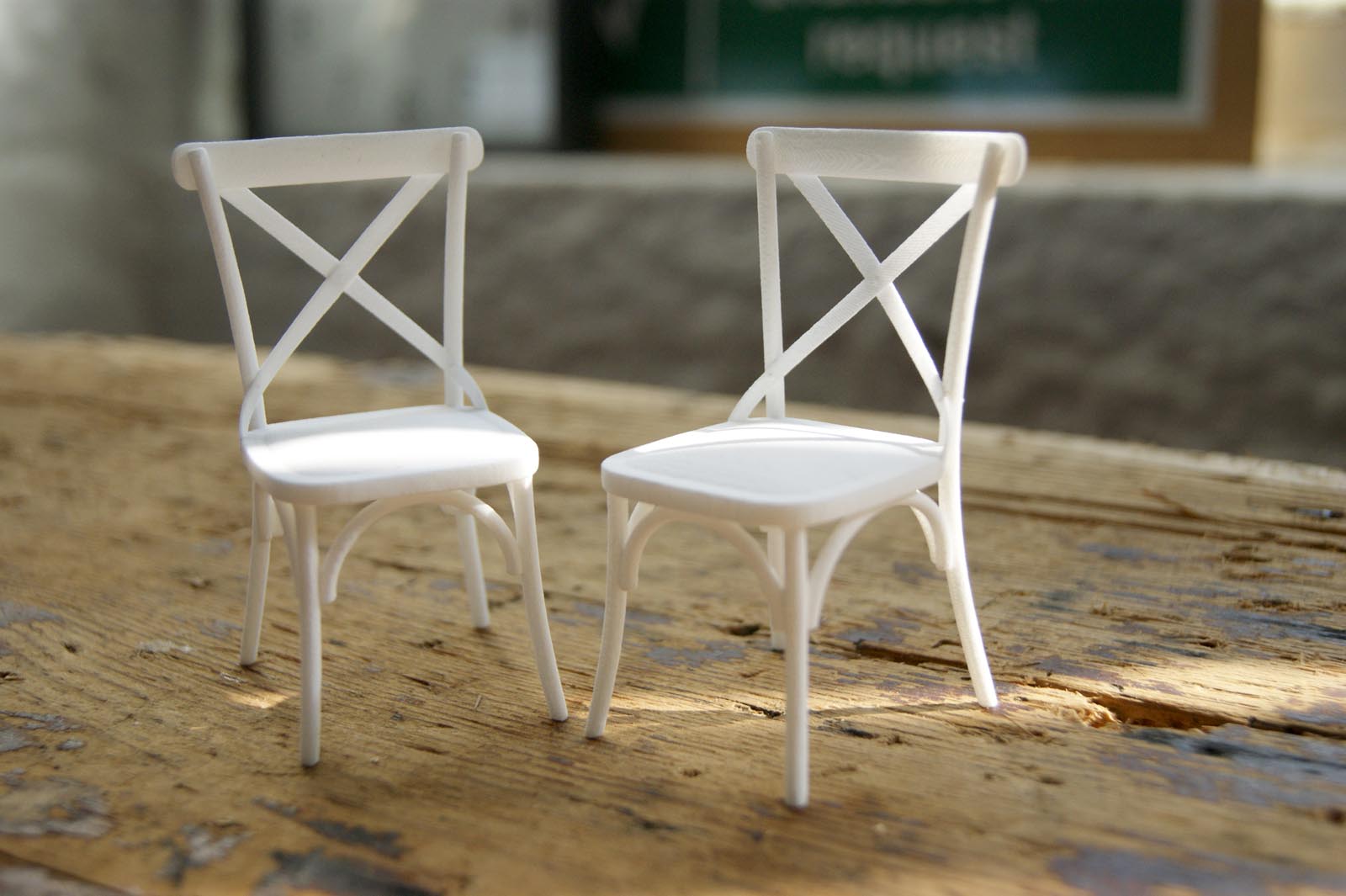3D model libraries exist to allow digital artists to quickly populate their scenes with appropriate content. Using libraries for 3D models can be a time saver, and as such saves money and costs. But what happens when a specific model cannot be found in any library? This can happen quite often, perhaps an architect would like a particular bench outside their building, or an interior designer would like to see a specific item of furniture in their lounge.
The solution is to build the 3D models manually. Using as much information as possible, the 3D artist can turn drawings, dimensions and other references into 3D models. The accuracy of the 3D models is highly dependant on what information can be found. If the item to be modelled can be physically held, studied and measured, then the model will be more accurate than a model created from a handful of photos.
In a recent project I was asked to model the Dark Cross Dining chair.

From the website, we have the above image, and some basic dimensions, and that's all! However from this one image and the measurements I can re-create the chair in 3D. I also used the image to measure the leg thickness, the proportions of the chair, and overall shape and size of various parts. There are some assumptions I made, such as the seat height is similar to a standard dining chair, the chair is symmetrical and the legs are circular. I had to guess other areas, such as the rear of the chair, the curve of the top bar and the shape of the seat.

This image shows how the chair is built in 3D. Keeping models simple, and adding detail where needed is my philosophy, and this is evident in this 3D chair. Techniques can be then applied to the model to turn the faceted geometry into smooth curves.
Generally the 3D model would then have textures and materially applied, and rendered inside a scene. This model was created for a client, who only required the 3D model without materials.
I then decided to take this model and use it as a test for 3D printing. The chair didn't require many changes to make the chair printable, however some models will require more work. When creating 3D models for visualisations, the artist will often not model parts which aren't seen, such as the bottom of the chair as this is deemed as unnecessary and time consuming, however with 3D printing, all areas of the model need to be created. Also when 3D printing models, the model needs to meet a certain specification depending of the type of 3D printer that will be used. Some printers require a minimum part thickness of 1mm, so in the case of this chair, when it was scaled to 1/1o the cross detail was thinner than 1mm, so this had to be made thicker.
Once the 3D model is complete, the 3D chair model is then sent to a 3D printing company. There are several companies, all differing in difference services and price. The one I chose to use this time was 3D Print UK. I chose to use them as their pricing is different to other 3D printing companies, as they price on the overall dimension of the 3D model, rather than volume, and as I wanted to print several items (more blog posts to follow) the overall price was better than printing each model separately.
So the 3D models were sent away, and 2 weeks later a little parcel arrived containing the prints....


The prints really exceeded my expectations, the level of detail is much better than I had expected, and the strength of the prints are good too. I wasn't sure if the little fixings would be printed, as they are slightly smaller than the minimum specification, but they are still visible.

The finish of the white nylon print is an interesting finish. To touch it feels like an Extra Strong Mint, and visually it does too. The nylon material which the models are printed with is also quite easy to mark, and can also leave little powdery marks on skin and anything else it comes into contact with, although I presume this is left from the printing process, and any loose nylon powder is soon discarded.
I ordered 2 chairs, so I could try painting and finishing a chair.


The finishing of the brown chair was done using Humbrol Airfix paints, but with nylon prints almost any type of finishing can be used. The 3D Print UK site demonstrates using aerosol paints to finish the 3D prints.
Painting and finishing the models is important with nylon prints, not only to add detail, but also to protect the prints from dirt and marks. Even if a white finish is desired, I would still use a clear finish.
3D printing is something I've always been fascinated with, and printing these chairs has only made me more intrigued and more sure that 3D printing will play a huge roll in the very near future. The quality of the prints is very good, perhaps not as detailed as traditional model making processes, but if you consider the lack of tooling needed, and the individuality 3D printing offers then 3D printing is a very viable solution, especially for one-off items, or for rapid prototyping.
The main downside with 3D printing using external companies is the lead time, which in my experience is around 2 weeks. This is still very good, however I see 3D printing as something that could be incredibly useful for rapid prototyping, testing ideas, and playing with concepts.
The other downside is price, £100 doesn't print a lot, and could soon become costly if several iterations of a model were printed. For myself, I see these external print companies useful for finished 3D models, and I plan to purchase a desktop 3D printer for testing and prototyping. Watch this space......













